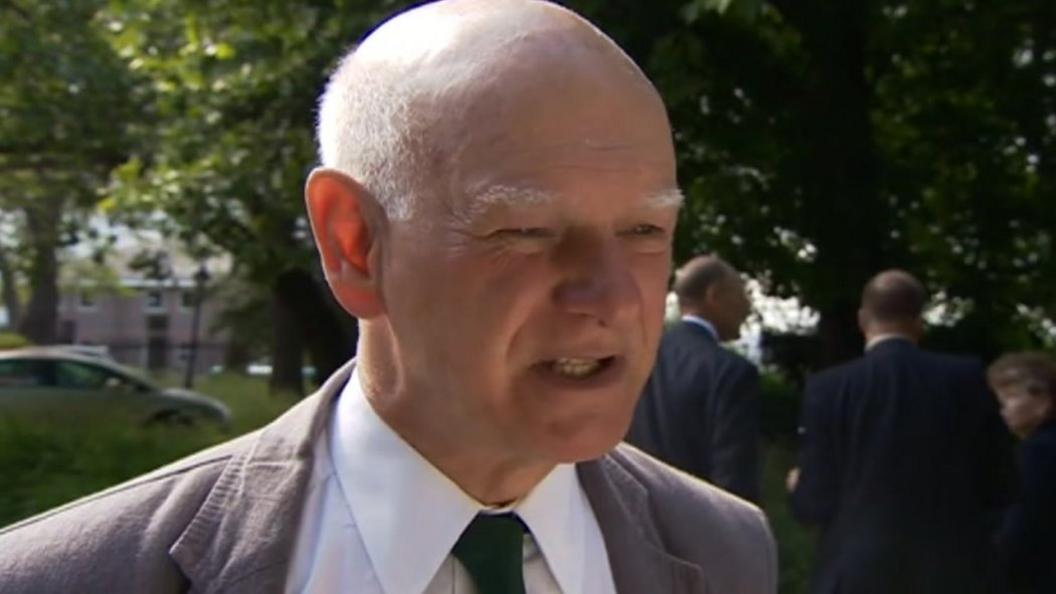Heathrow submits third runway options to Davies Commission
- Published
- comments
.jpg)
One of the airport's preferred options is to have a runway to the south-west of the existing airport
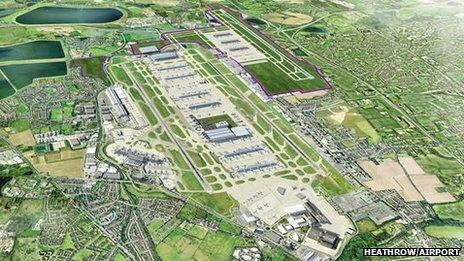
A second preferred option is a runway to the north-west of the airport
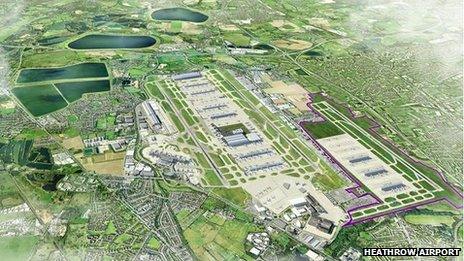
A runway to the north of the airport is the least preferred option because of its noise impact, although it would be the easiest to build
Heathrow Airport has unveiled three options for a new runway, saying each one would be "quicker and cheaper" than plans for a rival hub airport.
The airport's submission, external to the Davies Commission, which is looking at raising airport capacity, outlined a runway to the north, north-west or south-west of the existing airport.
It said a new runway could be in place by 2029, allowing 260,000 more flights.
Residents, environmentalists and the London mayor oppose Heathrow's plans.
'Minimising impact'
Heathrow submitted its options to the government-appointed Airports Commission, external, headed by former Financial Services Authority chairman Sir Howard Davies.
It is reviewing how the UK might expand its airport capacity in south-east England and interested parties have until Friday 19 July to submit their preferred options.
Ahead of submitting its proposals on Friday, Gatwick bosses said this week that they would prefer "a constellation system of three London airports - keeping Heathrow open, whilst building an additional runway at Gatwick, and then perhaps in time a new runway at Stansted".
On Monday, Mayor of London Boris Johnson published proposals for three possible replacement hubs - an artificial island in the Thames Estuary dubbed "Boris Island", a major expansion at Stansted, or an airport at the Isle of Grain in north Kent.
The commission is expected to recommend options by the end of this year, but will not submit its final report until summer 2015 - after the next general election.
According to Heathrow's submission, building a new runway would deliver extra capacity at the airport by 2025-29 and would allow it to operate 740,000 flights a year - up from the current limit of 480,000.
Heathrow's preferred option would be to place a new runway to the north-west or the south-west of the airport.
This would "deliver a full-length third runway while minimising the impact on the local community".
The submission also detailed how a new westerly runway would help reduce noise pollution because planes would not have to fly so low over London.
It predicted that, even with a third runway, there would be 10-20% fewer people affected by noise under its new plans.
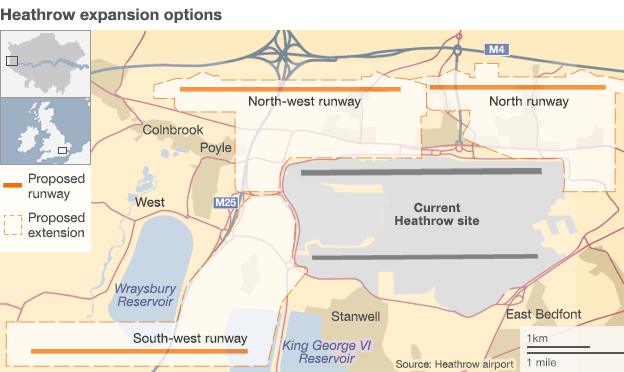
Each of the options would mean the compulsory purchase of some properties and some property demolitions, as well as potentially major work on the M25.
'Flying pigs'
Stanwell Moor is a village near Heathrow and one of its councillors said it would "get completely destroyed" under one of the options.
"I wasn't totally surprised because we knew these would be in the pipeline but it's a pretty desperate situation and pretty frightening," said Robert Evans.
"The real problem now is the area is blighted and there will be a period of uncertainty; people will be anxious because they bought their homes and now they find the home isn't the asset they thought."
Residents' group Heathrow Association for the Control of Aircraft Noise (Hacan) said it would fight any proposal for a new runway "tooth and nail".
Hacan chairman John Stewart said it was difficult to square Heathrow's claim that expansion could take place while cutting noise for residents.
Heathrow chief executive Colin Matthews said the UK "desperately needed a single hub airport with the capacity to provide the links to emerging economies which can boost UK jobs, GDP and trade".
"It is clear the best solution for taxpayers, passengers and business is to build on the strength we already have at Heathrow," he said.
Mr Matthews said he had not ruled out a fourth runway at Heathrow, but said this would not be needed until at least 2040.
However, Mr Johnson said the proposals for a new runway at Heathrow "were politically, environmentally and socially unacceptable".
"There will be more pigs flying than aircraft if we are to believe the claim that three runways at Heathrow will make less noise than two," he said.
Heathrow Chief Executive Colin Matthews: "Uncertainty - that's the message I hear from people. They want to know"
Mr Johnson added the move "would be a disastrous outcome for Londoners, nor would it solve our aviation capacity crisis as a fourth runway would need to be in the planning process before a third was even open".
Greenpeace accused the airport of presenting a "reheated and rehashed" plan with the same "flawed arguments that failed so categorically last time around".
But business groups backed the plans, including the trade body which represents Britain's airlines.
The Board of Airline Representatives said no other proposal so far on airport capacity could "deliver the UK's hub airport capacity quicker, at the right cost, or in the right place for airlines and their passengers".
- Published1 July 2015
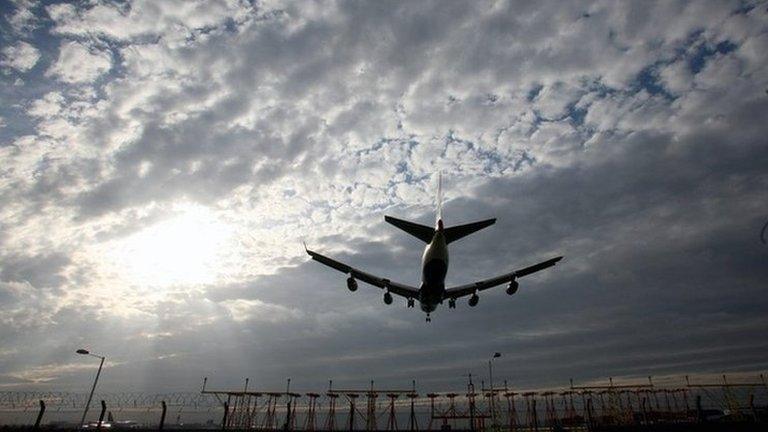
- Published15 July 2013
.jpg)
- Published18 June 2013
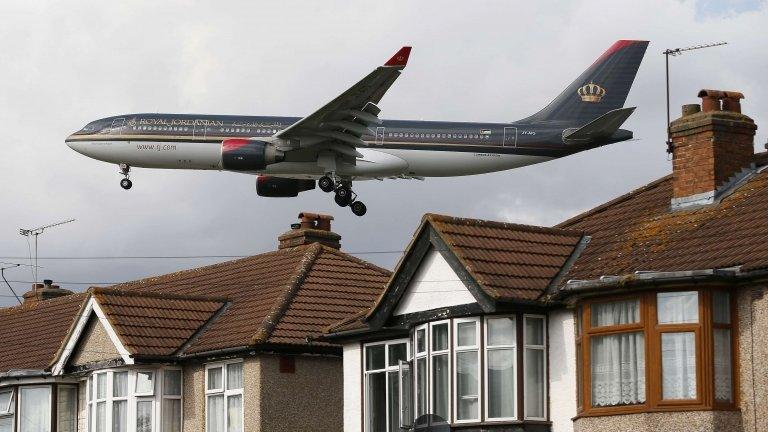
- Published13 June 2013
